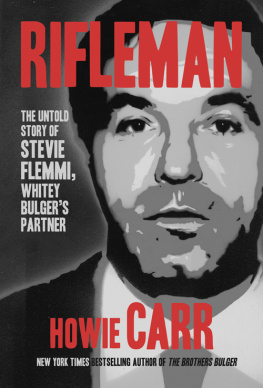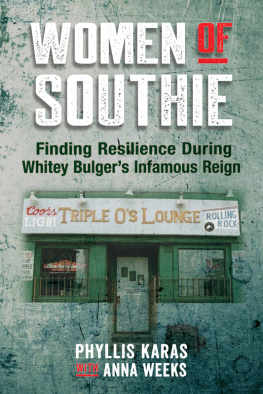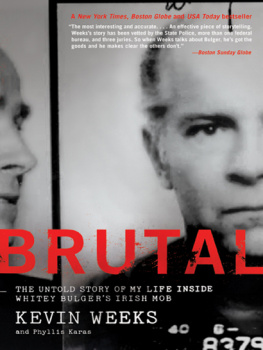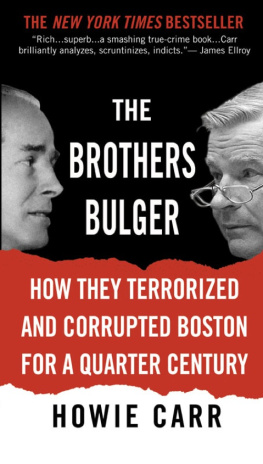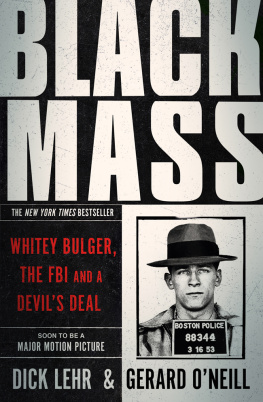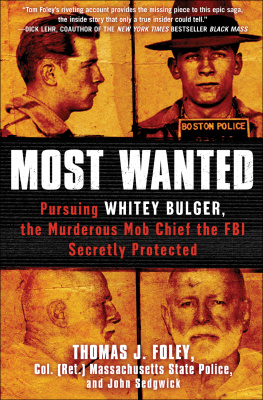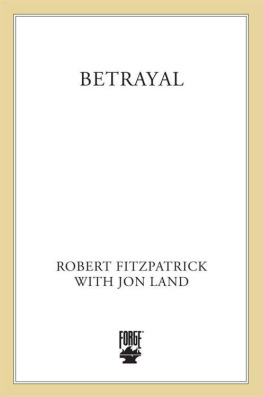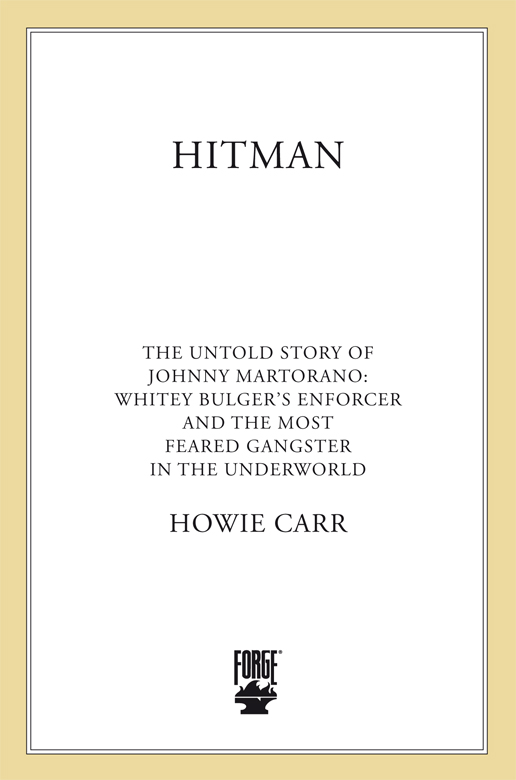
The author and publisher have provided this e-book to you without Digital Rights Management software (DRM) applied so that you can enjoy reading it on your personal devices. This e-book is for your personal use only. You may not print or post this e-book, or make this e-book publicly available in any way. You may not copy, reproduce or upload this e-book, other than to read it on one of your personal devices.
Copyright infringement is against the law. If you believe the copy of this e-book you are reading infringes on the authors copyright, please notify the publisher at: us.macmillanusa.com/piracy .
Once again, to Kathy, and to my mother
Contents
Acknowledgments
First of all, thanks to my beautiful wife, Kathy, and our three daughtersCarolyn, Charlotte, and Tinafor their forbearance during the writing of this book. And Carolyn, thank you for your assistance in bailing me out of whatever computer difficulties I was grappling with from day to day.
Obviously, this book could not have been written without the cooperation of Johnny Martorano. I sought him out on his return to Boston, and eventually he came around to the idea that his life story could serve as the framework for a larger tale, a history of organized crime in Boston over the past half century.
We spent hours together, much of it in the city room of the Boston Herald early Sunday mornings. He talked, I listened. Everything that has been said about his memory is true. Not only does he have a near-photographic recall of details, but hes also a first-class raconteur. As one of my Herald colleagues who got to know Johnny on those Sunday mornings put it, If only he wasnt so damned likable. He also introduced me to a number of his friends and associates, who had their own stories to share and whose memories refreshed Johnnys recollections, as a lawyer might say in court. I appreciate everyone who shared their stories with me, although I wont name them, for obvious reasons.
I hope that the photographs will add a different dimension to this book. I would like to thank everyone at the Herald, where I have worked for so many years, for their assistance. For allowing me to print many of the photographs, I owe a particular debt of gratitude to Pat Purcell, the owner and publisher of the Herald . Thanks also to the staff of the Herald s library, which came up with clippings about ancient crimes. Photographer Mark Garfinkel also provided invaluable assistance.
As for the mug shots, most of them were made available to me by people who probably wouldnt appreciate being identified here. But I hope they know how much gratitude I have for their assistance. The two organizational charts of the Winter Hill Gang, from 1975 and 1982, were made available to me by the Drug Enforcement Administration (DEA) and the Massachusetts State Police (MSP). Many thanks, especially to DEA agent Dan Doherty.
My great friend Larry Bruce spent what must have seemed to him like endless hours getting the mug shots into publishable form, and I appreciate it more than I can express. I would also like to thank my radio producer, Nancy Shack, for all her help on the book in so many ways.
Much of this book is based on public records and police reports. To break up the text, I occasionally used transcripts of Johnnys testimony at the two Zip Connolly trials, in Boston in 2002 and in Miami in 2008. He was asked many of the same questions at both trials, and I used what I considered the more compelling of his answers.
I am grateful to all who provided me with the FBI reports quoted in the book, and also thanks to the Boston Police Departments public-information unit, from which I obtained the official accounts of murders sometimes dating back more than forty years.
Bob Gleason, my editor at Forge, has been a pleasure to work with. He and his staff, especially his assistant Ashley Cardiff and editor Eric Raab, did yeomans work molding the books various elements into a coherent whole. Along with Larry Bruce, Erics skillful handling of the photos gave this book its unique look. George Tobia, my agent as well as Johnnys, put together the deal in his usual professional matter.
Finally, for introducing me to Bob Gleason, I owe my friend Bill Martin, the bestselling novelist, more than one gift certificate to Flemings Steak House or the Hanover Street Chophouse, whichever he so desires.
Prologue: Miami 2008
JOHNNY MARTORANO WAS choosing his words carefully. It was September 17, 2008, and he was sitting in the witness stand in a state courtroom in Miami. The sixty-seven-year-old hitman was being cross-examined in the murder trial of a corrupt FBI agent from Boston, John Joseph Connolly, Jr.better known as Zip, the nickname bestowed upon him by his underworld paymaster, the legendary gangster Whitey Bulger.
Zip Connolly was already more than five years into a ten-year federal sentence for racketeering. And now in Florida he was facing life for the 1982 murder of a businessman whod made the fatal mistake of throwing in with the Hillthe Winter Hill Gang of Bostonof which Johnny Martorano was a founding member.
Martorano had actually pulled the trigger on the businessman, John Callahan, a good friend of histhe twentieth and final murder of his career. But state prosecutors were contending that the murder at the airport in Fort Lauderdale had actually been orchestrated by the highly decorated FBI agent, as Zip Connolly was invariably described in the newspapers.
Zip was accused of convincing the Hill that Callahan could implicate all of them, gangsters and FBI agents alike, in an earlier string of murders involving the takeover of a jai-alai company.
At Zip Connollys first trial for racketeering, in Boston, Martorano had been the prosecutions chief witness, and Zips attorneys hadnt been able to lay a glove on him. Now, in Miami, another high-powered defense lawyer was having a go at Martorano, and he, too, was flailing. The lawyer, Manuel Casabielle, had already told the judge during a sidebar conference that simply being in the presence of Martorano was intimidating him.
It feels scary when you are close to him, Casabielle whispered. The Dade County jurors didnt seem frightened, though. They appeared mesmerized by his tales of the Winter Hill Gang, a collection of unusually murderous mobsters.
At its peak, the Hills cast of killers had included Martorano, admitted murderer of nineteen men and one woman, as well as Stevie the Rifleman Flemmi. The Rifleman was now doing life for ten murders, and in various other court appearances Flemmi had taken the Fifth Amendment when asked about nine other slayings hed never been formally charged with.
Finally there was James Whitey Bulger, a fugitive since 1994, number two on the FBIs Ten Most Wanted List behind only Osama bin Laden. Just two weeks earlier, on his seventy-ninth birthday, the FBI had doubled the reward for his capture to $2 million. Whitey, who hadnt been seen in the United States since 1996, was charged with twenty-one murders.
What Johnny Martorano hadnt known during his gangster days was that both Whitey Bulger and Stevie Flemmi were informants for the FBIrats, as Johnny would put it. And for that he could never forgive them.
Whitey and Stevie hadnt been just Johnny Martoranos partners, they were among his closest friends. Stevie was the godfather of Johnnys middle son, christened in 1970 when Stevie was a fugitive from murder and car-bombing raps in Boston. Whitey was the godfather of Johnnys youngest son, Jimmy, born in 1986, when Johnny himself was on the lam, in Florida, living less than thirty miles from the courthouse where he was now testifying.


